Catocala desdemona
Catocala desdemona
kah-TOCK-uh-lahMdes-de-MOH-nuh
Henry Edwards, 1882
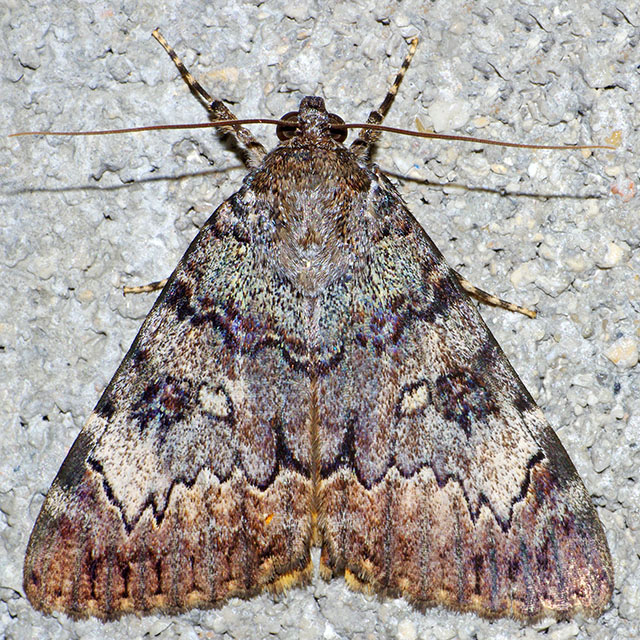
Catocala desdemona, Devil's River, Val Verde County, Texas,
around May 6, 2018, courtesy of Dave Barker, id by Lawrence Gall.
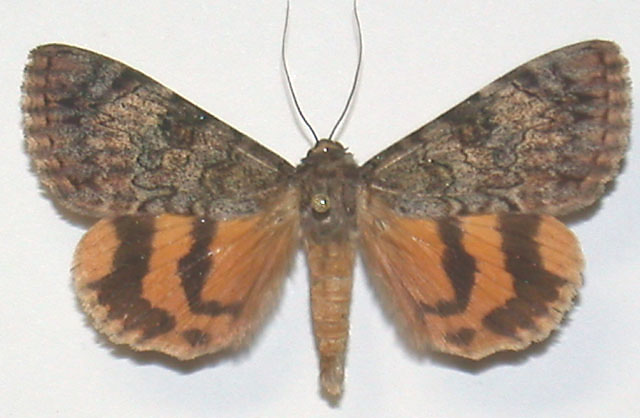
Catocala desdemona
New-Mexico, Villa Nueva State Park, June 30, 2002,
caught by Pierre de Tonnancour at Mercury vapor lamp,
images courtesy of Pierre Legault,
confirmed by Larry Gall and
David Hawks.
This site has been created by Bill Oehlke.
Comments, suggestions and/or additional information are welcomed by Bill.
| TAXONOMY:
Superfamily: Noctuoidea
Family: Erebidae, Leach, [1815]
Subfamily: Erebinae, Leach, [1815]
Tribe: Catocalini, Boisduval, [1828]
Genus: Catocala, Schrank, 1802
|
DISTRIBUTION:
Catocala desdemona,
The Desdemona Underwing
(wingspan: 55-65mm), flies in
New Mexico: Bernalillo, Colfax, Dona Ana, Grant, Hidalgo, Lincoln, Sandoval, San Miguel,
Sierra, Torrance, Union;
central Texas: Bexar, Blanco, Brewster, Brown,
Burnet, Coleman, Culberson, El Paso, Hays, Hudspeth, Jeff Davis, Kaufman, Kerr,
Kimble, Montague, Real, San Patricio, Taylor, Uvalde, Val Verde, Wise; and
Arizona: Cochise, Greenlee, Maricopa, Pima, Pinal,
Santa Cruz, Yavapai.
This species has also been reported in
Nevada: ??;
Colorado: Montezuma;
central Oklahoma:Comanche, Carter, Oklahoma,
Pittsburg, Pottawattamie, Woods;
Utah: Davis, Garfield, Grand, Kane, Utah, Washington.
It also flies southward through Mexico to Guatemala
and Honduras.
"AM line thick at costa, abruptly becoming thin near radial vein and near
inner margin, not conspicuously “beaded;” dorsal forewing highly variable,
usually mottled grayish brown; bands of dorsal hindwing yellowish orange;
edges of apical spot on ventral hindwing usually well defined." David Hawks.
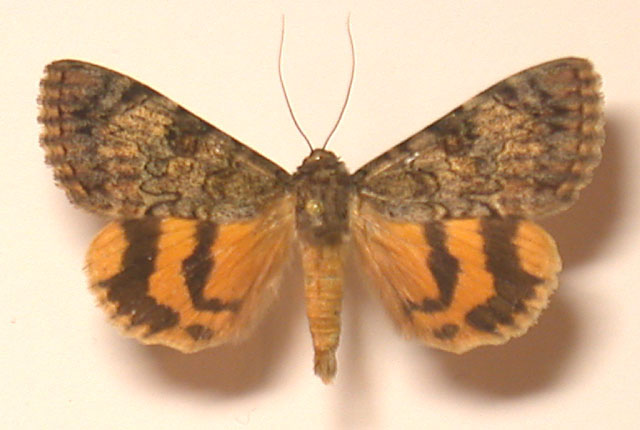
Catocala desdemona New-Mexico, Villa Nueva State Park, June 30, 2002,
caught by Pierre de Tonnancour at Mercury vapor lamp,
images courtesy of Pierre Legault,
confirmed by Larry Gall and David Hawks.
FLIGHT TIMES AND PREFERRED FOOD PLANTS:
Catocala desdemona "adults emerge from May to November, with peaks of abundance in June and September,
at least in the southwestern United States and northern Mexico). This long
flight period, especially evident in southeastern Arizona, is apparently due to some eggs
hatching in response to the spring growth period of the oaks, while other eggs wait until
the summer growth period to hatch. There is no evidence that C. desdemona is ever
double brooded." David Hawks.
"Larvae of C. desdemona undoubtedly feed on several species of oaks
in nature, but so far have only been recorded on Quercus oblongifolia Torr. (Huachuca Mountains, Arizona)."
The Catocala desdemona caterpillar feeds on oaks and willows. Catocala desdemonah, Onion Saddle, 7600'.
Cochise County, Arizona. July 17, 1998. Kelly Richers, collector, at uv trap. | 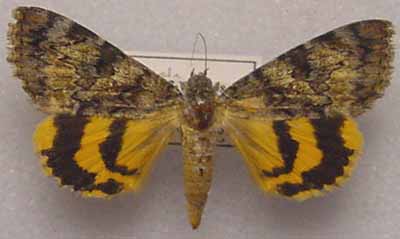 |
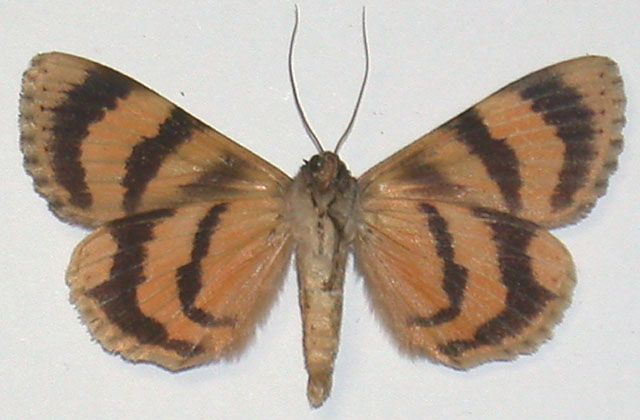
Catocala desdemona underside,
New-Mexico, Villa Nueva State Park, June 30, 2002,
caught by Pierre de Tonnancour at Mercury vapor lamp,
images courtesy of Pierre Legault,
confirmed by Larry Gall and
David Hawks.
ECLOSION:
Adults eclose from pupae at soil surface.
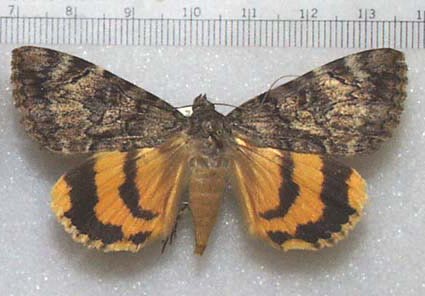
Catocala desdemona, Arizona, courtesy of Bruce Walsh.
SCENTING AND MATING:
Catocala desdemona females
emit an airbourne pheromone and males use their antennae to track the
scent plume.
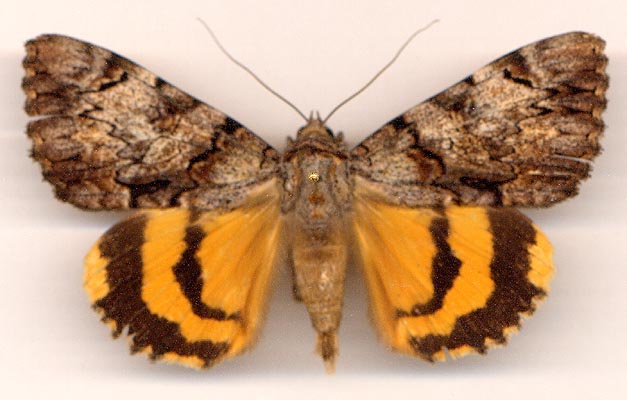 Catocala desdemona, Honduras, courtesy of Kirby Wolfe.
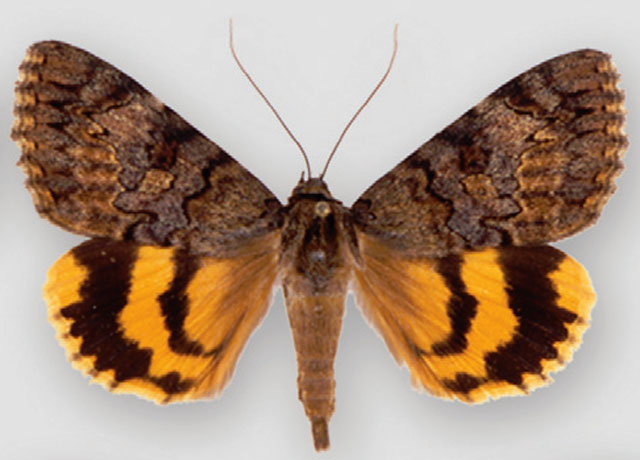
Catocalades desdemonah, 55mm, courtesy of David Hawks.
EGGS, CATERPILLARS AND PUPAE:Eggs are deposited on
tree bark in the fall and hatch the following spring.
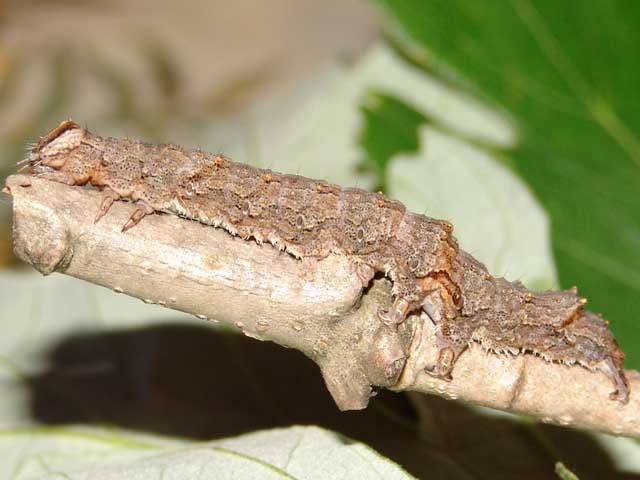
Catocala desdemona, courtesy of Gabe Larrabee.
Larval Food Plants
Listed below are primary food plant(s) and alternate food plants.
It is hoped that this alphabetical listing followed by the common
name of the foodplant will prove useful. The list is not exhaustive,
although some species seem very host specific.
Experimenting with closely related foodplants is worthwhile.
Quercus gambeli
Quercus macrocarpus.......
Quercus oblongifolia .......
Salix
|
Gambel Oak
Bur oak
Mexican blue oak
Willow
|
Return to Main Index
This page is brought to you by Bill Oehlke and the
WLSS. Pages are on space rented from Bizland. If you would like to become a "Patron of the Sphingidae/Catocala Sites",
contact Bill.
Please send sightings/images to Bill. I will do my best to respond to requests for identification help.
Enjoy one of nature's wonderments: Live Saturniidae (Giant Silkmoth) cocoons.

|

To show appreciation for this site, click on the flashing
butterfly to the left, a link
to many worldwide insect sites. |
Visit Catocala delilah Species Complex; Author: David Hawks.
|










